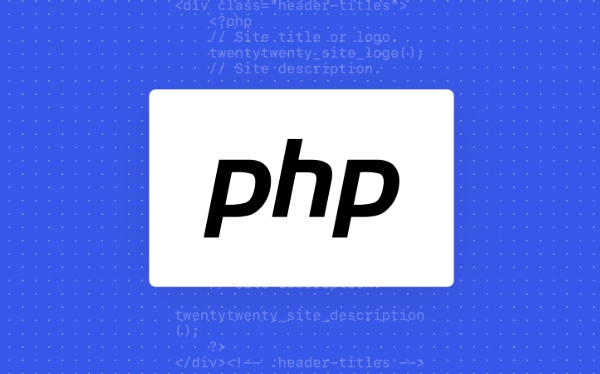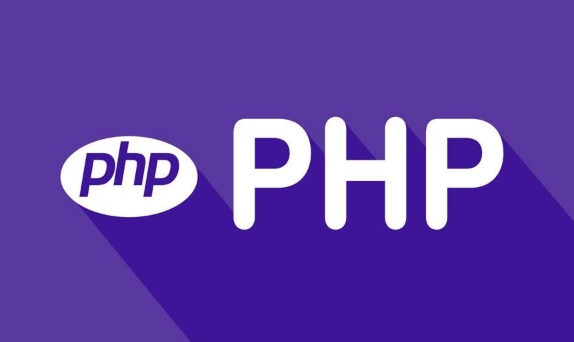 Backend Development
Backend Development
 PHP Tutorial
PHP Tutorial
 How to use PHP sessions with a different domain or cross-domain?
How to use PHP sessions with a different domain or cross-domain?
How to use PHP sessions with a different domain or cross-domain?
Jul 13, 2025 am 02:46 AMThe answer is: PHP native session is only available for single domain names by default, but can be shared across domains through manual intervention. 1. Explicitly pass the session ID, pass it through URL parameters or custom headers and set session_id in the target domain name; 2. Share the session storage backend, such as using Redis, Memcached or NFS shared directories; 3. Set the domain attribute of the cookie to be suitable for subdomain sharing; 4. Use advanced solutions such as OAuth, JWT, or SSO to replace the direct sharing session to improve security and scalability. The above methods need to be combined with HTTPS and security controls to prevent risks.

If you are developing applications that share user status with multiple domain names, you may encounter the problem of "How to use session across domains in PHP". The answer is: PHP native session is only valid under one domain name by default. To achieve cross-domain use, several key points need to be manually intervened.

Here are some practical practices to help you share session data between different domain names.
1. Set a unified session ID delivery method
By default, PHP stores and passes session IDs through cookies. Cookies have domain restrictions and can only be passed to pages under the current domain name by default.

Solution:
- Pass the session ID explicitly through URL parameters or custom header.
- For example, when jumping to another domain name, take
?sid=xxxand then force the session ID to be set in the target domain name usingsession_id($_GET['sid']).
// Get the current session ID before jumping
session_start();
$sessionId = session_id();
header("Location: https://otherdomain.com/page.php?sid=" . $sessionId); // Receive sid in otherdomain.com and set if (isset($_GET['sid'])) {
session_id($_GET['sid']);
}
session_start();?? Note:

- Doing so will easily expose the session ID and be sure to use it with HTTPS.
- It is best to add validity control to avoid long-term exposure causing safety risks.
2. Shared session storage backend
If two domain names use different servers or storage paths, even if they have the same session ID, they may not be able to read the same data.
Solution:
- Set the session storage path to a location that all domain names can access (such as the NFS shared directory).
- Or use centralized session storage such as database, Redis, Memcached, etc.
For example, use Redis to store session:
//Configure the following content on both servers corresponding to the two domain names ini_set('session.save_handler', 'redis'); ini_set('session.save_path', 'tcp://127.0.0.1:6379'); session_start();
In this way, no matter which domain name starts the session, data will be read and written from the same Redis instance.
3. Set the domain attribute of the cookie (applicable to subdomains)
If the two domain names are the relationship between the primary domain and the subdomain (such as example.com and app.example.com ), you can automatically share by setting the domain of the session cookie.
session_set_cookie_params([
'lifetime' => 0,
'path' => '/',
'domain' => '.example.com', // Note that there is a point 'secure' => true, // If it is HTTPS
'httponly' => true,
'samesite' => 'None'
]);
session_start(); After setting this, the browser will send the session cookie to all subdomains under .example.com .
4. Cross-domain communication solution (advanced)
If you do not want to manually process the session ID, you can also consider using OAuth, JWT, or single sign-on (SSO) mechanisms to unify the authentication status.
This type of solution does not directly share sessions, but exchanges identity information through tokens. Although it is a little more complex, it is safer and more scalable, and is suitable for large systems.
Common practices include:
- Cross-domain authentication using OpenID Connect protocol
- Use JWT Token instead of session to carry user identity information in the request header
Basically these are the methods. PHP itself does not natively support cross-domain sessions, but by manually controlling session ID and shared storage, state synchronization between multiple domain names can be achieved. Operation is not too difficult, but you should pay attention to security and consistency issues.
The above is the detailed content of How to use PHP sessions with a different domain or cross-domain?. For more information, please follow other related articles on the PHP Chinese website!

Hot AI Tools

Undress AI Tool
Undress images for free

Undresser.AI Undress
AI-powered app for creating realistic nude photos

AI Clothes Remover
Online AI tool for removing clothes from photos.

Clothoff.io
AI clothes remover

Video Face Swap
Swap faces in any video effortlessly with our completely free AI face swap tool!

Hot Article

Hot Tools

Notepad++7.3.1
Easy-to-use and free code editor

SublimeText3 Chinese version
Chinese version, very easy to use

Zend Studio 13.0.1
Powerful PHP integrated development environment

Dreamweaver CS6
Visual web development tools

SublimeText3 Mac version
God-level code editing software (SublimeText3)

Hot Topics
 Solution to PHP Session cross-domain problem
Oct 12, 2023 pm 03:00 PM
Solution to PHP Session cross-domain problem
Oct 12, 2023 pm 03:00 PM
Solution to the cross-domain problem of PHPSession In the development of front-end and back-end separation, cross-domain requests have become the norm. When dealing with cross-domain issues, we usually involve the use and management of sessions. However, due to browser origin policy restrictions, sessions cannot be shared by default across domains. In order to solve this problem, we need to use some techniques and methods to achieve cross-domain sharing of sessions. 1. The most common use of cookies to share sessions across domains
 How to use Flask-CORS to achieve cross-domain resource sharing
Aug 02, 2023 pm 02:03 PM
How to use Flask-CORS to achieve cross-domain resource sharing
Aug 02, 2023 pm 02:03 PM
How to use Flask-CORS to achieve cross-domain resource sharing Introduction: In network application development, cross-domain resource sharing (CrossOriginResourceSharing, referred to as CORS) is a mechanism that allows the server to share resources with specified sources or domain names. Using CORS, we can flexibly control data transmission between different domains and achieve safe and reliable cross-domain access. In this article, we will introduce how to use the Flask-CORS extension library to implement CORS functionality.
 How to check if PHP session has been started?
Aug 28, 2023 pm 09:25 PM
How to check if PHP session has been started?
Aug 28, 2023 pm 09:25 PM
In PHP, we use the built-in function session_start() to start a session. But the problem we have with the PHP script is that if we execute it more than once, it throws an error. So, here we will learn how to check if the session has been started without calling the session_start() function twice. There are two ways to solve this problem. For PHP5.4.0 and below. Example<?php if(session_id()==''){
 How to make cross-domain requests in Vue?
Jun 10, 2023 pm 10:30 PM
How to make cross-domain requests in Vue?
Jun 10, 2023 pm 10:30 PM
Vue is a popular JavaScript framework for building modern web applications. When developing applications using Vue, you often need to interact with different APIs, which are often located on different servers. Due to cross-domain security policy restrictions, when a Vue application is running on one domain name, it cannot communicate directly with the API on another domain name. This article will introduce several methods for making cross-domain requests in Vue. 1. Use a proxy A common cross-domain solution is to use a proxy
 How to allow cross-domain use of images and canvas in HTML?
Aug 30, 2023 pm 04:25 PM
How to allow cross-domain use of images and canvas in HTML?
Aug 30, 2023 pm 04:25 PM
To allow images and canvases to be used across domains, the server must include the appropriate CORS (Cross-Origin Resource Sharing) headers in its HTTP response. These headers can be set to allow specific sources or methods, or to allow any source to access the resource. HTMLCanvasAnHTML5CanvasisarectangularareaonawebpagethatiscontrolledbyJavaScriptcode.Anythingcanbedrawnonthecanvas,includingimages,shapes,text,andanimations.Thecanvasisagre
 Cross-domain problems encountered in Vue technology development and their solutions
Oct 08, 2023 pm 09:36 PM
Cross-domain problems encountered in Vue technology development and their solutions
Oct 08, 2023 pm 09:36 PM
Cross-domain problems and solutions encountered in the development of Vue technology Summary: This article will introduce the cross-domain problems and solutions that may be encountered during the development of Vue technology. We'll start with what causes cross-origin, then cover a few common solutions and provide specific code examples. 1. Causes of cross-domain problems In web development, due to the browser's security policy, the browser will restrict requests from one source (domain, protocol or port) for resources from another source. This is the so-called "same origin policy". When we are developing Vue technology, the front-end and
 Are there any alternatives to PHP sessions?
Apr 29, 2025 am 12:36 AM
Are there any alternatives to PHP sessions?
Apr 29, 2025 am 12:36 AM
Alternatives to PHP sessions include Cookies, Token-based Authentication, Database-based Sessions, and Redis/Memcached. 1.Cookies manage sessions by storing data on the client, which is simple but low in security. 2.Token-based Authentication uses tokens to verify users, which is highly secure but requires additional logic. 3.Database-basedSessions stores data in the database, which has good scalability but may affect performance. 4. Redis/Memcached uses distributed cache to improve performance and scalability, but requires additional matching
 PHP Session cross-domain and cross-platform compatibility processing
Oct 12, 2023 am 09:46 AM
PHP Session cross-domain and cross-platform compatibility processing
Oct 12, 2023 am 09:46 AM
PHPSession's cross-domain and cross-platform compatibility processing With the development of web applications, more and more developers are facing cross-domain problems. Cross-domain refers to a web page under one domain name requesting resources under another domain name. This increases the difficulty of development to a certain extent, especially for applications involving session (Session) management. It is a tricky problem. question. This article will introduce how to handle cross-domain session management in PHP and provide some specific code examples. Session Management is We





